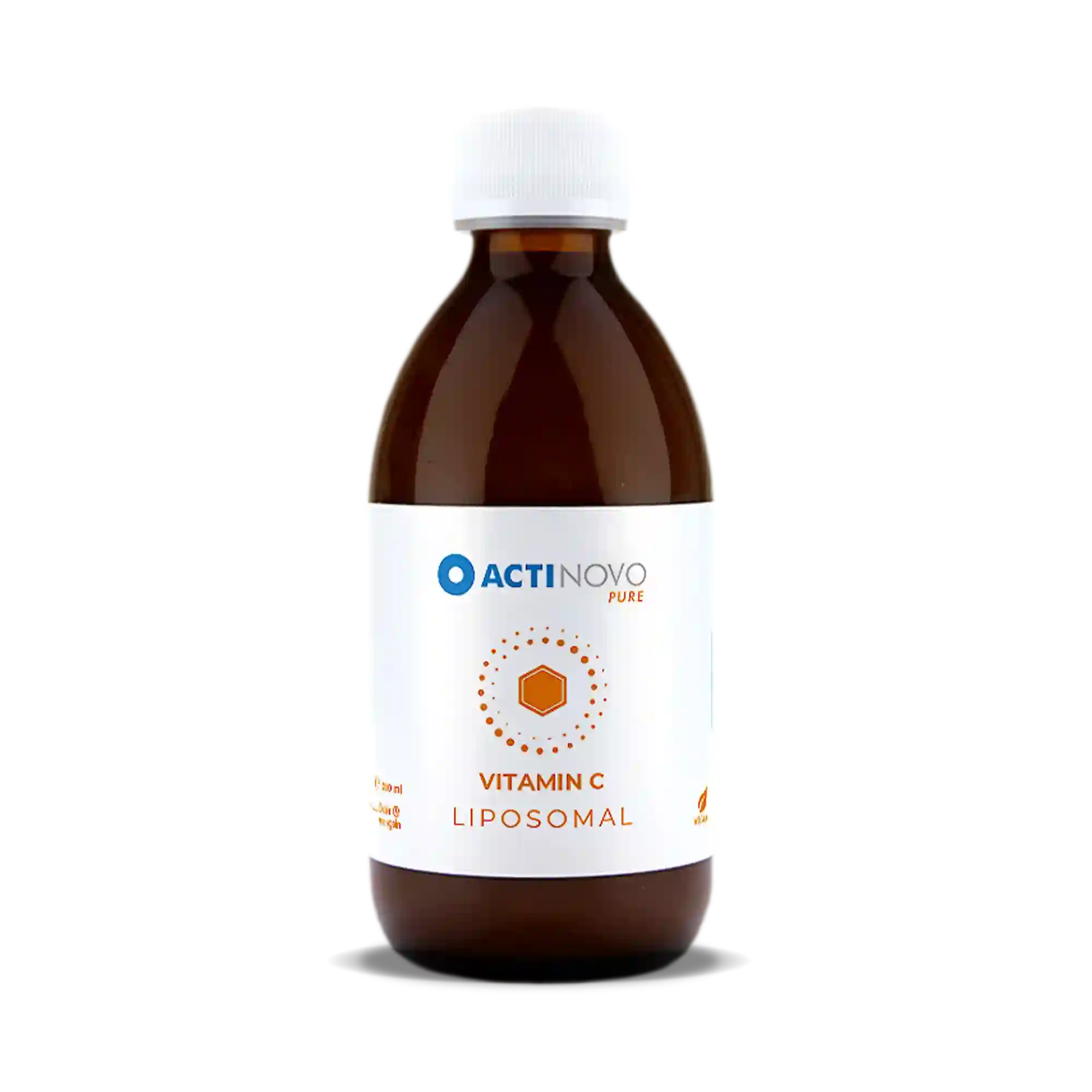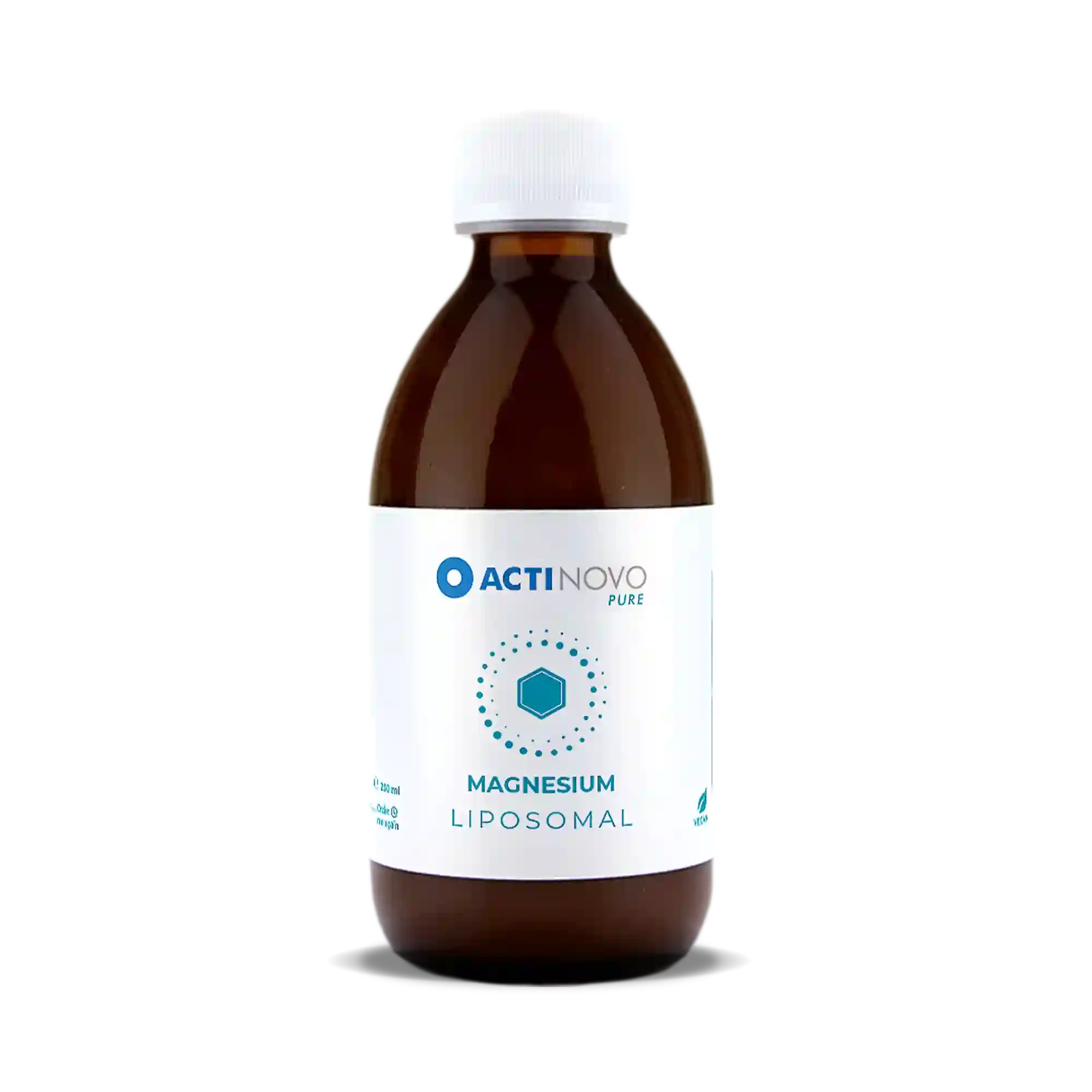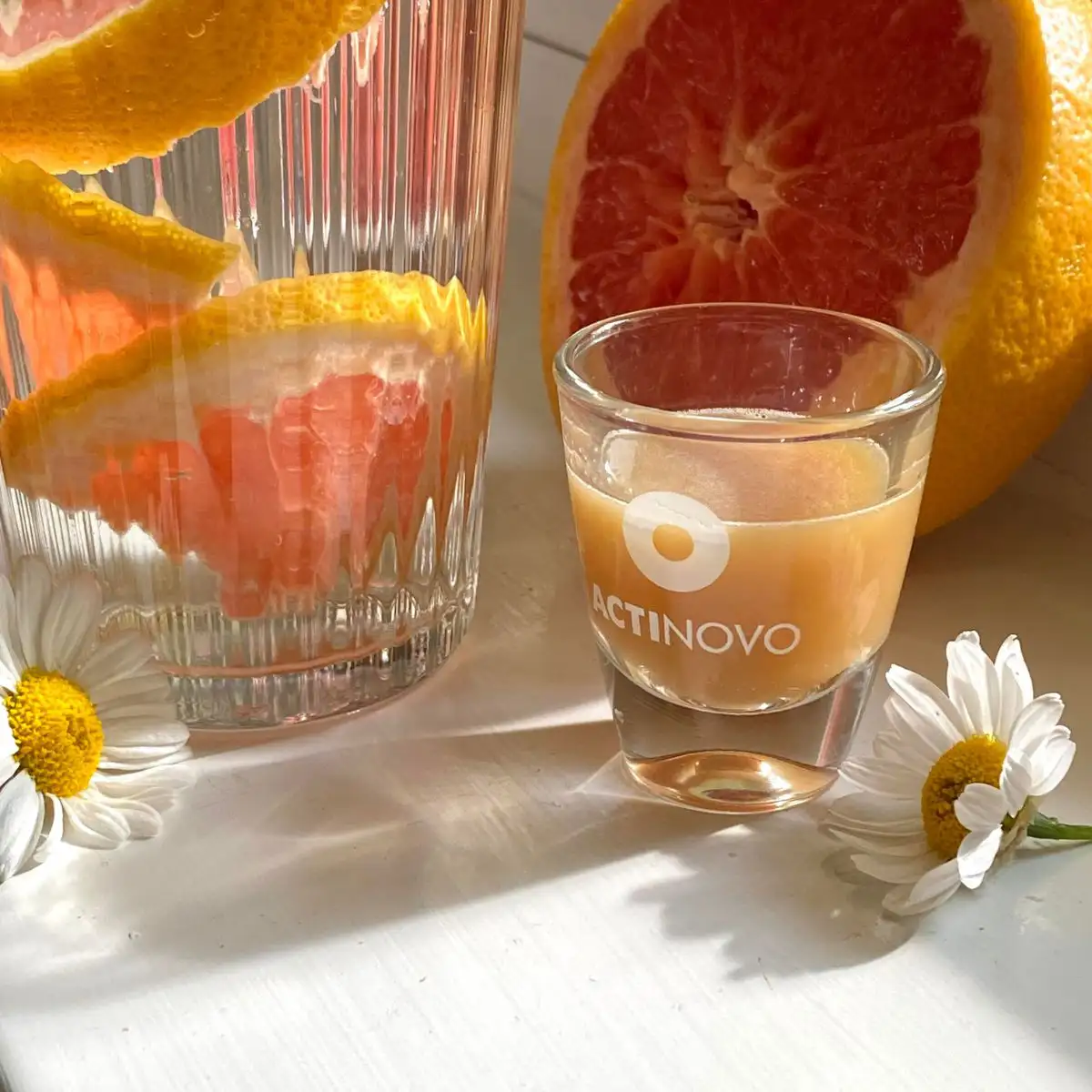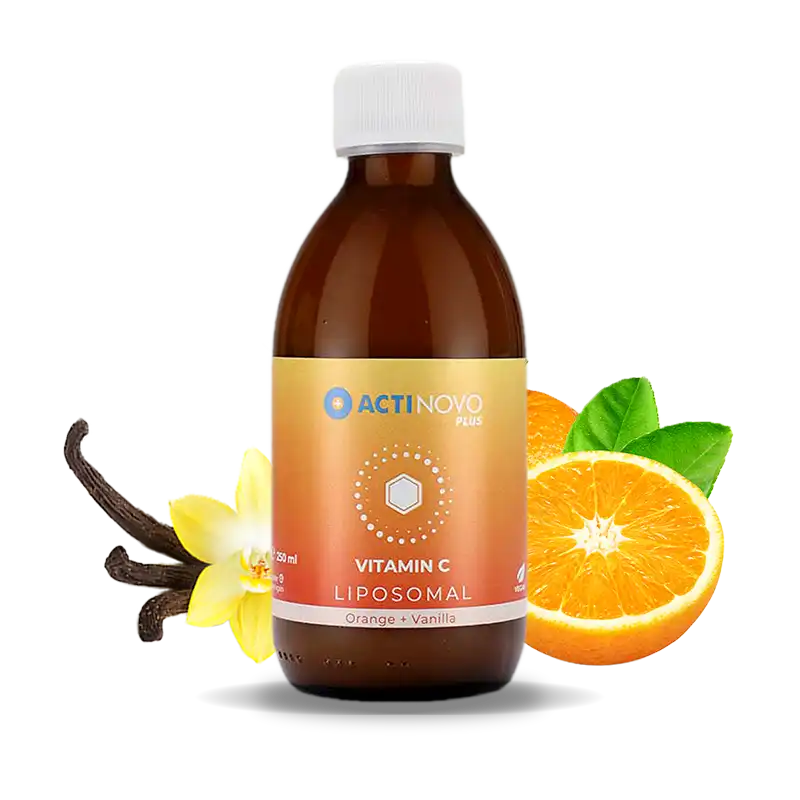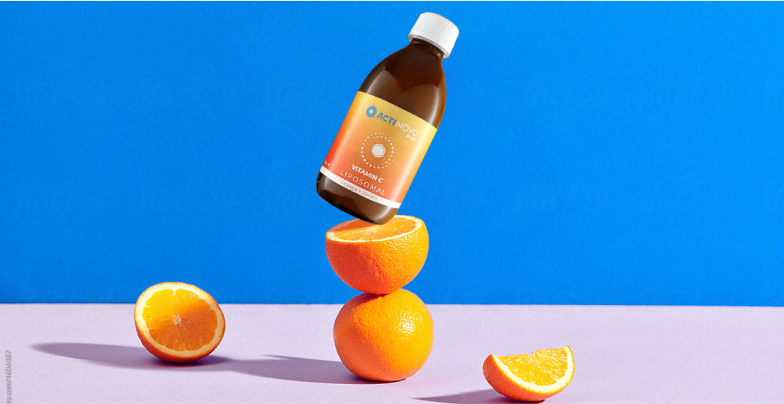
How do liposomes increase absorption of nutrients?
Liposomes are nano-sized spheres of phospholipids (in our case from sunflowers).
Already used for decades in pharmacy, they ensure a more targeted and complete absorption of active substances. Liposomal dietary supplements, on the other hand, are relatively new.
You may wonder what exactly makes them so special compared to your average vitamin pill.
- Protection of active ingredients: The harsh environment of the stomach can damage some active ingredients. Encapsulation in liposomes protects the them in the digestive system.
- Masking: Phospholipids mask the active ingredients so that larger amounts can be absorbed and escape the selective power of the small intestine. Osmotic side effects of some high doses of vitamins and minerals can be reduced.
- Absorption: Through normal fat absorption, the active substances enter the enterocytes (intestinal cells) directly through passive fat uptake. From there they reach the bloodstream via the lymphatic system. That way, a liver passage can be avoided, which would normally block some substances from making their way into the blood and other organs[1].
What Will You Learn in This Guide?
1. When should I turn to liposomes and why?
2. Magnesium side effects minimized by liposomes
3. Polyphenols have poor bioavailability
4. Phospholipids in liposomes - healthy?
5. Conclusion
1. When should I turn to liposomes and why?
Liposomes and high-dose vitamin C
Vitamin C is a water-soluble nutrient that plays a vital role in collagen synthesis, energy metabolism and the immune system. As an antioxidant, it fights cellular stress. Due to its solubility in water, excess vitamin (> 1000 mg) can be excreted relatively easily.
Such an "overdose" of vitamin C occurs because the intestinal absorption is a very controlled process. This is because vitamin C transporters actively channel their freight to the inside of the intestine. If the concentration is too high, the transporters cannot keep up and the vitamin is washed out before it can be absorbed.
Even in very high concentrations, vitamin C is relatively harmless[2]. Frequent side effects associated with vitamin C intake are a consequence of vitamin C not being absorbed in the intestine.
This is called osmotic effect:
Since vitamin C from food supplements is often too highly concentrated, it is automatically diluted. This is done by redistributing water. Osmotic diarrhoea occurs.
Other absorption side effects are nausea or cramps. Symptoms are similar to lactose intolerance, which is based on the same principle[3].
In general, up to 2000 mg vitamin C per day over a longer period is considered safe for adults over 19 years of age[4]. This is referring to the amount from food and dietary supplements combined. However, if healthy people consume more over a longer period of time, side effects can occur.
Liposomes help with high-dose vitamin C uptake. Since the absorption of phospholipids is passive, the encapsulated vitamin just follows across the gut barrier. Normally the intake of doses from 1000 mg on is reduced by 50 % [5].
Advantages of liposomal vitamin C
- Particularly people who use vitamin C as complementary therapy may want to take high doses non-intravenously. In liposomal vitamin C bioavailability can be increased due to the changed uptake mechanism.
- Osmotic side effects are avoided.
2. Magnesium side effects minimized by liposomes
Magnesium is similar to vitamin C, the vital mineral does not pose a major health risk in high doses. Why? Because an excess is excreted by the kidneys via the urine.
In general, the mineral magnesium as a cofactor of many enzymes ensures the smooth function of our metabolism.
Magnesium deficiency is rare. However, there is a condition of insufficient magnesium intake that should not be neglected.
Inflammatory intestinal diseases can hinder the absorption of magnesium. Older people can also easily develop a magnesium imbalance because they are less able to absorb it and excrete it more easily.
Prolonged intake of too little magnesium can promote several diseases, including Hypertension, cardiovascular disease, type 2 diabetes and migraine headaches[5].
The recommended daily intake for adults is 375 mg. The upper safe additional intake as supplement is 350 mg for healthy adults[6].
Such high concentrations are osmotically active because not everything can be absorbed quickly enough by the primary transporters in the intestinal wall. Water is attracted and diarrhoea occurs.
When taking magnesium, it is therefore often recommended to divide the dose into smaller doses and take them several times a day.
Magnesium carbonate, magnesium chloride, magnesium gluconate and magnesium oxide are the most common causes of intestinal problems[7].
In general, only 35-55%[8] is absorbed, depending on the type of magnesium. If the amount is divided ideally or combined with meals, this can still improve. If too much magnesium is consumed, a smaller proportion will be taken up.
Advantages of liposomal magnesium
- The low ratio of absorbed magnesium can be increased as the specific uptake mechanism is not used.
- You don’t have to distribute the dose over the day. Magnesium no longer needs to be absorbed actively in your gut. It can be brought across the intestinal barrier with the help of passive fat absorption. Usually, zinc and magnesium use the same channel for absorption, in liposomal form they can be taken together without competition.
- The osmotic side effects are avoided.
- Reduced absorption in inflammatory bowel diseases patients or the elderly can be improved.
3. Polyphenols have poor bioavailability
Polyphenols are secondary plant substances. This means that they are not required for the survival of the plant cell, but for that of the plant as a whole.
Most of them show antioxidant properties, have color or smell, protect against UV radiation or pathogens.
Because humans are confronted with similar environmental stresses as plants, polyphenols also have an effect in our body. Some secondary plant substances combat such fundamental threats that we consume them to keep healthy.
There are a few major problems to polyphenols
Their poor solubility in water leads to poor absorption. Substances such as curcumin are also quickly eliminated from the body and excreted again[9].
advantages of liposomal polyphenols
- Polyphenols (plant substances such as curcumin) are not able to get into the bloodstream easily, because of their poor watersolubility. They can be dissolved in the lipophilic part of liposomes.
- In liposomes, larger polyphenol amounts can overcome the intestinal barrier.
- Liposomes increase transport via the lymphatic system. The first passage through the liver is delayed and plant compounds are not immediately eliminated.
4. Phospholipids in liposomes - healthy?
Phospholipids (PLs) are water- and fat-soluble molecules that occur in all plant and animal cell membranes, where they form double layers. ActiNovo uses vegetable phospholipids from sunflowers that contain unsaturated fatty acid chains.
PLs generally consist of phosphate and fatty acids, which can be unsaturated or saturated, pro-inflammatory or anti-inflammatory (omega-3 or -6). Therefore, the effect on your health depends on the kind of PL that is used.
All this can be explained by the fact that the fatty acids of phospholipids from food can be integrated into the cell membranes of our body. This also changes the membrane profile of cells, which can play a role in diseases, e.g. when immune cells or cancer cells are involved.
The microenvironment of the membrane changes, membrane proteins and secondary signals can be influenced.
5. Conclusion
Liposomes improve the absorption of some important micronutrients!
Whether insoluble, too bulky or limited in their absorption mechanism, liposomes can help especially with higher doses of dietary supplements.
When are liposomes a good option for me?
- You want to compensate for a deficiency that is already showing symptoms.
- You want to balance a decreasing uptake due to advancing age.
- You want to make use of the full potential of secondary plant compounds.
- You want to use nutrients as complementary medicine.

